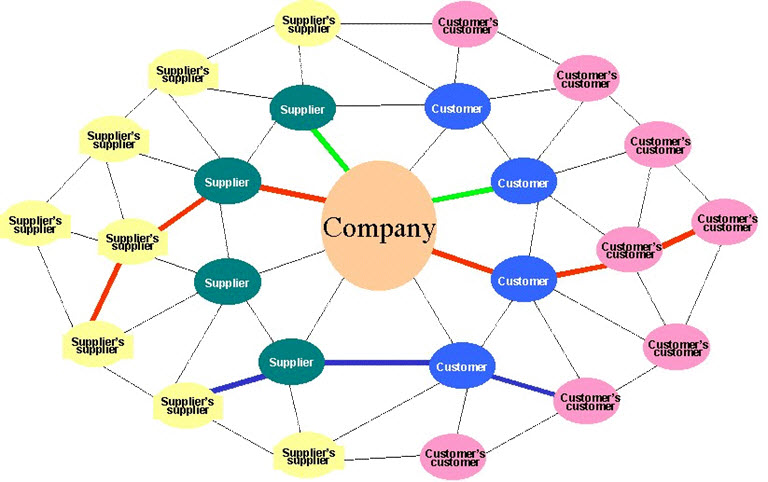Supply chain management (SCM) is the active management of supply chain activities to maximize customer value and achieve a sustainable competitive advantage. It represents a conscious effort by the supply chain firms to develop and run supply chains in the most effective & efficient ways possible. Supply chain activities cover everything from product development, sourcing, production, and logistics, as well as the information systems needed to coordinate these activities.

The concept of Supply Chain Management (SCM) is based on two core ideas:
1. The first is that practically every product that reaches an end user represents the cumulative effort of multiple organizations. These organizations are referred to collectively as the supply chain.
2. The second idea is that while supply chains have existed for a long time, most organizations have only paid attention to what was happening within their “four walls.” Few businesses understood, much less managed, the entire chain of activities that ultimately delivered products to the final customer. The result was disjointed and often ineffective supply chains.
The organizations that make up the supply chain are “linked” together through physical flows and information flows.
Physical Flows
Physical flows involve the transformation, movement, and storage of goods and materials. They are the most visible piece of the supply chain. But just as important are information flows.
Information Flows
Information flows allow the various supply chain partners to coordinate their long-term plans, and to control the day-to-day flow of goods and materials up and down the supply chain.
Definition
If you go to a Supermarket and pick up a few items off the shelf from electronics and white goods or even clothes and look at the labels, the chances are that you will find them having been manufactured in China or Mexico. The coffee pods you buy to use for your everyday use comes from Africa. Computers have been shipped out of South American Factories and Soft furnishings on the shelves are from India and Hong Kong.
Global markets are expanding beyond borders and re-defining the way demand and supplies are managed. Global companies are driven by markets across continents. To keep the cost of manufacturing down, they are forced to keep looking to set up production centers where the cost of raw materials and labor is cheap. Sourcing of raw materials and vendors to supply the right quality, quantity and at right price calls for dynamic procurement strategy spanning across countries.
With the above scenario you find companies procuring materials globally from various vendors to supply raw materials to their factories situated in different continents. The finished goods out of these different factory locations then pass through various chains of distribution network involving warehouses, exports to different countries or local markets, distributors, retailers and finally to the end customer.
In simple language, managing all of the above activities in tandem to manage demand and supply on a global scale is Supply Chain Management. As per definition SCM is the management of a network of all business processes and activities involving procurement of raw materials, manufacturing and distribution management of Finished Goods. SCM is also called the art of management of providing the Right Product, At the Right Time, Right Place and at the Right Cost to the Customer.
Why SCM strategy is important for an Organization
Supply Chain Strategies are the critical backbone to Business Organizations today. Effective Market coverage, Availability of Products at locations that hold the key to revenue recognition depends upon the effectiveness of Supply Chain Strategy rolled out. Very simply stated, when a product is introduced in the market and advertised, the entire market in the country and all the sales counters need to have the product where the customer can buy and take delivery. Any glitch in the product not being available at the right time can result in the drop in customer interest and demand which can be disastrous. Transportation network design and management assume importance to support sales and marketing strategy.
Inventory control and inventory visibility are two very critical elements in any operations for these are the cost drivers and directly impact the bottom lines on the balance sheet. Inventory means value and is an asset to the company. Every business has a standard for inventory turnaround that is optimum for the business. Inventory turnaround refers to the number of times the inventory is sold and replaced over a period of twelve months. The health of the inventory turn relates to the health of business.
In a global scenario, the finished goods inventory is held at many locations and distribution centers, managed by third parties. A lot of inventory would also be in the pipeline in transportation, besides the inventory with distributors and retail stocking points. Since any loss of inventory anywhere in the supply chain would result in loss of value, effective control of inventory and visibility of inventory gains importance as a key factor of Supply Chain Management function.


